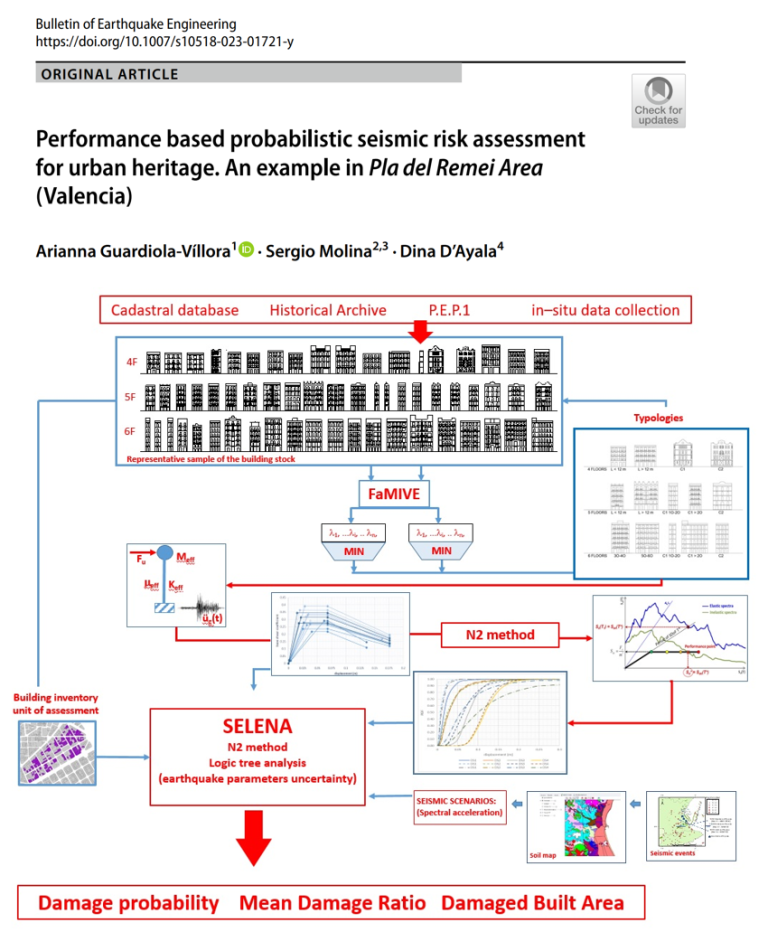New journal article - Performance based probabilistic seismic risk assessment for urban heritage ...
1 July 2023
New Journal Article Titled - "Performance based probabilistic seismic risk assessment for urban heritage. An example in Pla del Remei Area (Valencia)"

Abstract:
The assessment of the seismic behaviour of historic residential buildings and the estimation of their possible losses in the event of an earthquake, is a must for defining strategic mitigation plans to prevent irreplaceable heritage losses. In this study an integrated performance based probabilistic risk assessment methodology is developed. An archival study and a field survey allow to identify architectural and construction characteristics of heritage residential buildings in urban areas and determine realistic structural models. These are analysed by using a limit state approach, coded in the FaMIVE method, considering different construction hypotheses, to produce capacity curves which support the identification of a discrete number of typologies representative of the entire building stock in the area. Their fragility functions are then derived using the modified N2 method. Because of the difficulty in quantifying the expected probable losses in purely economic terms, given the heritage value of these assets, losses are computed in terms of damaged floor surface area and mean damage ratio. These have been obtained through the earthquake loss estimation platform SELENA, considering different possible seismic scenarios. The procedure is applied to masonry residential buildings in Pla del Remei area of Valencia, Spain, built between the end of the 19th Century and the end of the Spanish War (1939). This neighbourhood embodies the cultural values, construction techniques and historic legacy of a new and brief era of modernity, inspired by the new urban theories and architectural styles of Eclecticism and Modernism. Despite Valencia being located in an area of low to moderate seismicity, the results show that the maximum percentage of built damaged area ranges from 5.8 to 11.6% for 475 years return period, increasing to 33.59–51.59% for 975 years return period. The high level of resolution of the study allows mapping and identifying the structures at higher risk and is therefore a valuable tool to support sensitive and targeted retrofitting policies.
The article is pubslished open-access, available online at this link.
Please click here for a complete list of relevant publications by the UNESCO Chair in DRR-RE researchers at UCL.
 Close
Close

